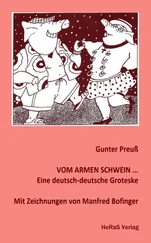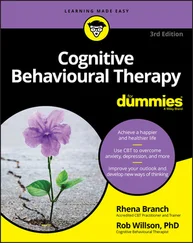1 Cover
2 Title Page Schema Therapy for Borderline Personality Disorder Second Edition ARNOUD ARNTZ Department of Clinical Psychology, University of Amsterdam, The Netherlands HANNIE VAN GENDEREN Maastricht, The Netherlands
3 Copyright Page
4 About the Authors
5 Preface
6 Acknowledgments
7 Introduction
8 1 Borderline Personality DisorderWhat Is Borderline Personality Disorder? Prevalence and Comorbidity Development of BPD
9 2 Schema Therapy for Borderline Personality DisorderThe Development of Schema Therapy for Borderline Personality Disorder Research Results (Contra‐) Indications Rationale of Treatment/Theories Supporting Treatment Schema Modes Summary
10 3 Treatment Structure of Treatment Phases in Treatment Frequently Asked Questions About Treatment
11 4 The Therapeutic Relationship Limited Reparenting Therapists' Schemas Self‐Disclosure Cognitive Techniques and the Therapeutic Relationship Behavioral Techniques and the Therapeutic Relationship Summary
12 5 Experiential Techniques Imagery Imagery Rescripting Imagery Rescripting in the Final Phase of Treatment Imagery Rescripting: Changing Behavior Patterns in the Future Frequently Asked Questions About Imagery Rescripting Role Play Two‐or‐More‐Chair Technique Experiencing and Expressing Emotions Experiencing and Expressing Other Emotions Frequently Asked Questions About Experiential Techniques in General Conclusion
13 6 Cognitive Techniques The Socratic Dialogue Evaluation on a Visual Analogue Scale Multidimensional Evaluation Two‐Dimensional Reproductions of Supposed Connections Pie Chart Courthouse Method Historical Testing Self Monitoring Circle Flashcards Positive Logbook Frequently Asked Questions About Cognitive Techniques
14 7 Behavioral Techniques Experiments Skills Training and Role Play Problem Solving Discussing Dangerous Behaviors Discussing New Behaviors Frequently Asked Questions About Behavioral Techniques
15 8 Specific Methods and TechniquesHomework Pharmacological Therapy Crisis Suicide and Self‐Injury Trauma Processing Frequently Asked Questions About Processing Traumas
16 9 Methods per Mode Treatment Methods for the Detached Protector Treatment Methods for the Abandoned/Abused Child Treatment Methods for the Happy Child Treatment Methods for the Angry Child Treatment Methods for the Undisciplined/Impulsive Child Treatment Methods for the Punitive Parent Treatment Methods for the Healthy Adult A Simultaneous Chess Play in a Pinball Machine
17 10 Schema Therapy in Other Settings and ModalitiesSchema Therapy in Day‐Treatment and Inpatient Settings Schema Therapy and Nonverbal Therapies Group Schema Therapy Schema Therapy for Couples Summary
18 11 Final Phase of TherapyBehavioral Pattern‐Breaking Ending Therapy
19 12 Conclusion
20 Appendix A: Brochure for Patients: Schema Therapy for People with Borderline Personality DisorderWhat Is Borderline Personality Disorder? What Is Schema Therapy? Description of BPD from the Perspective of Schema Therapy Goal of Schema Therapy
21 Appendix B: Cognitive Diary for Modes
22 Appendix C: Positive Logbook
23 Appendix D: Historical Testing
24 Appendix E: Experiments
25 Appendix F: Homework Form
26 Appendix G: Problem Solving
27 Appendix H: Changing Behavioral Patterns
28 Appendix I: Eighteen Schemas Disconnection and Rejection Impaired Autonomy and Performance Impaired Limits Other‐Directedness Overvigilance and Inhibition
29 Appendix J: Coping Strategies Surrender (Schema‐Affirming Behavior: Freeze ) Avoidance (Schema‐Evasive Behavior: Flight ) Overcompensation (Showing the Opposite Behavior in Order to Fight the Schema: Fight )
30 Appendix K: Form for the Historical Role Play
31 References
32 Index
33 End User License Agreement
1 Chapter 1 Table 1.1 DSM‐5 diagnostic criteria for borderline personality disorder
2 Chapter 2 Table 2.1 Examples of impulsive behavior
3 Chapter 3 Table 3.1 Therapeutic techniques Table 3.2 Different reactions possible in the first moments of the session. Q...
4 Chapter 4Table 4.1 Steps in limit settingTable 4.2 Possible consequences for violating limitsTable 4.3 Cognitive diary on the therapeutic relationship
5 Chapter 5Table 5.1 Questions during Imagery RescriptingTable 5.2 The two phases of the basic model of imagery rescripting during the...Table 5.3 The three phases of the basic model for imagery rescripting during ...Table 5.4 The three phases of historical role playingTable 5.5 Two‐ and multiple‐chair techniqueTable 5.6 Expressing anger
6 Chapter 6Table 6.1 Cognitive diary for modes (see Appendix B)Table 6.2 Cognitive diary for modes (also see Appendix B)Table 6.3 Continuation of cognitive diary for modes (also see Appendix B)
7 Chapter 9Table 9.1 Examples of the pros and cons of the detached protector
8 Chapter 11Table 11.1 Overview gradual reduction of session frequency
1 Chapter 2 Figure 2.1 The development of dysfunctional schemas Figure 2.2 Borderline personality disorder: six modes Figure 2.3 Borderline personality disorder: an example of a case conceptuali...
2 Chapter 3 Figure 3.1 Case conceptualization Nora Figure 3.2 Mode model with schemas and historical roots Nora
3 Chapter 4Figure 4.1 Example of functional analysis of the interaction between therapi...
4 Chapter 5Figure 5.1 Pathways to childhood memories
5 Chapter 6Figure 6.1 Example of a visual analogue scaleFigure 6.2 Thinking up different dimensionsFigure 6.3 Placing others on a dimensionFigure 6.4 Placing yourself on a dimensionFigure 6.5 Two‐dimensional representation of an assumed association between ...Figure 6.6 Nora had a brother who died of an overdose of heroin when she was...Figure 6.7 Self monitoring circle (derived from Farrell and Shaw (2012))
6 Chapter 10Figure 10.1 Example of a mode sequence in a couple: wife is diagnosed with B...
1 Cover
2 Table of Contents
3 Begin Reading
1 iii
2 iv
3 vii
4 ix
5 x
6 xi
7 xii
8 1
9 2
10 3
11 4
12 5
13 6
14 7
15 8
16 9
17 10
18 11
19 12
20 13
21 14
22 15
23 16
24 17
25 18
26 19
27 20
28 21
29 22
30 23
31 24
32 25
33 26
34 27
35 28
36 29
37 31
38 32
39 33
40 34
41 35
42 36
43 37
44 38
45 39
46 40
47 41
48 42
49 43
50 44
51 45
52 46
53 47
54 48
55 49
56 50
57 51
58 52
59 53
60 54
61 55
62 56
63 57
64 58
65 59
66 60
67 61
68 62
69 63
70 64
71 65
72 66
73 67
74 68
75 69
76 70
77 71
78 72
79 73
80 74
81 75
82 76
83 77
84 78
85 79
86 80
87 81
88 82
89 83
90 84
91 85
92 86
93 87
94 88
95 89
96 90
97 91
98 92
99 93
100 94
101 95
102 96
103 97
104 98
105 99
106 100
107 101
108 102
109 103
110 104
111 105
112 106
113 107
114 108
115 109
116 110
117 111
118 112
119 113
120 114
121 115
122 116
123 117
124 118
125 119
126 120
127 121
128 122
129 123
130 124
Читать дальше












